Retro Ramblings – Pokémon: Indigo League
Hi folks, J Lily here. Taking the reigns temporarily from Ben on this retro ramble. The last time I spoke to him about Pokémon he said something like “is that the thing with Pika-man?” And while it would be amusing to read an article of Ben making his way through the world of Pocket Monsters, I’m afraid you’ll have to make do with someone who’s probably seen far too much it.
Let’s clear this up right away – I’m not suggesting Pokémon itself is a relic of the past. I’m aware the franchise is a going concern and still chugging along nicely. So if you feel angry about the ‘retro’ label affixed to your beloved ‘mon, I hope this has calmed your totally proportionate internet rage. To place this article historically, it’s about the Pokémon show in the 90s – at its peak of fame in the United Kingdom; those years of mainstream notoriety tapering off around the release of Ruby and Sapphire. The reason why ‘retro’ when applied to Pokémon offends *me* so much is because those days were one hell of a long time ago, and if you, like me, can remember being around back then, it’s just another uncomfortable reminder that you. are. old.
Finally, if you’re in your mid-to-late 20s, like me, I hope through this article we can share some happy reminisces on those times: Jigglypuff and his marker pen microphone, those rice balls the dub called ‘jelly doughnuts,’ why Misty was the one and only true girl pairing for Ash, and sundry other topics that, if we were discussing this at a party – huddled away in our little nerd corner – an uneducated outsider might stare upon us contemptuously and think “what a bunch of losers” (they’d be wrong).
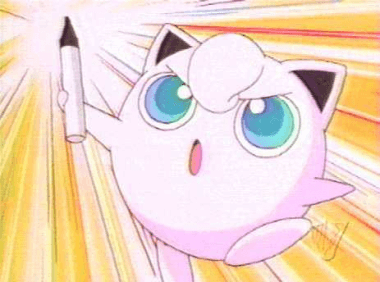 In case you didn’t know, the series was commissioned to push the Pokémon video game onto kids. Whether they sink or swim, shows like this are not usually considered to be ‘classically’ good: Produced on the cheap, often with a small staff, not so much a centerpiece product but part of the overall marketing mix. This show was a huge success however, and ended up being a big deal unto itself – there was a lot of Pokémon on UK TV between ‘98 and ‘00. It was huge on terrestrial and satellite (the UK equivalent of cable) with Sky One essentially replacing its entire cartoon slate with nothing but back-to-back Pokémon. Meanwhile, the franchise became a well-worn fluff piece in the media. You’d often see debate in the news: was this popular program a) mere cute Japanese weirdness, or b) something darker, irresponsible? Being an snot-nosed 11-year-old, desperate to validate my choice of viewing, I’d get very annoyed that these educated, grown-up types would argue over what type of show it was, but no pundit would ever express the opinion that it was a good show. Once I became aware what a slapdash enterprise a tie-in show largely is, I recognised why a jaded adult wouldn’t bother to look for quality in a series like Pokémon.
In case you didn’t know, the series was commissioned to push the Pokémon video game onto kids. Whether they sink or swim, shows like this are not usually considered to be ‘classically’ good: Produced on the cheap, often with a small staff, not so much a centerpiece product but part of the overall marketing mix. This show was a huge success however, and ended up being a big deal unto itself – there was a lot of Pokémon on UK TV between ‘98 and ‘00. It was huge on terrestrial and satellite (the UK equivalent of cable) with Sky One essentially replacing its entire cartoon slate with nothing but back-to-back Pokémon. Meanwhile, the franchise became a well-worn fluff piece in the media. You’d often see debate in the news: was this popular program a) mere cute Japanese weirdness, or b) something darker, irresponsible? Being an snot-nosed 11-year-old, desperate to validate my choice of viewing, I’d get very annoyed that these educated, grown-up types would argue over what type of show it was, but no pundit would ever express the opinion that it was a good show. Once I became aware what a slapdash enterprise a tie-in show largely is, I recognised why a jaded adult wouldn’t bother to look for quality in a series like Pokémon.
I fell out of the Pokébubble in the early ’00s, but around the early ‘10s I began to wonder: was Pokémon the anime really just a vapid tie-in cooked up for dumb kids like me? Or was there actually something good in there, worthy of proper critical appraisal (clearly the 11 year old me still needs some validation)? After all, there’s plenty of stuff I liked as a kid that I still recognize as good now – early Simpsons, Ren & Stimpy etc – so I dove into Netflix and found Pokémon: Indigo League, aka the first 80 of 850+ (and counting) episodes of Pokemon.
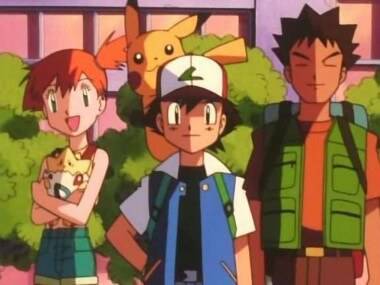 Indigo is the one from the 90s, the one with the “I wanna be the very best” theme you probably still know all the lyrics to. Re-watching for the first time in years, I was struck both by an overwhelming sense of nostalgia, and a sense of how absolutely unfathomable this thing must have been to anyone (i.e. any adult) who didn’t have time back then to appreciate the novelty of type differences, evolution, badges and sundry other cogs that make the Pokémon machine go. Having forgot most of my time spent playing Pokémon Blue, I too felt less engaged with elements of the show. Battle scenes felt far less exciting to me, for instance.
Indigo is the one from the 90s, the one with the “I wanna be the very best” theme you probably still know all the lyrics to. Re-watching for the first time in years, I was struck both by an overwhelming sense of nostalgia, and a sense of how absolutely unfathomable this thing must have been to anyone (i.e. any adult) who didn’t have time back then to appreciate the novelty of type differences, evolution, badges and sundry other cogs that make the Pokémon machine go. Having forgot most of my time spent playing Pokémon Blue, I too felt less engaged with elements of the show. Battle scenes felt far less exciting to me, for instance.
But after peeling away further layers of nostalgic haze, there’s a workmanlike charm to the show. I’m guessing this is because (and keep in mind I haven’t been too rigorous with my research) Pokémon at this stage wasn’t *quite* the unending production line of weekly content it would become. The first series was meant to be the last; a one-and-done deal to promote the game. Knowing this, one can reasonably assume there was some sort of finale vaguely planned, broadly using the ending of the game as a template (i.e. our hero becomes a Pokémon master). There’s a sense then that the writers have a trajectory, and due diligence is paid to every story beat you’d find in a standard “heroes’ journey” adventure tale. Sure, no-one’s trying to reinvent the wheel, but big events are made to feel big and high stakes are made to feel high, and that’s something. This discipline would get thrown out the window once a never-ending renewal order came down from on high, but in these early episodes, there’s at least a sense of momentum in Ash’s travels.
The strongest aspect of this show, I feel, is its large inventory of recurring gags. Here are a few I like best: Misty and Ash trading insults; Brock loves every girl he encounters; everything Team Rocket does; Psyduck antics; Jiggypuff antics; Charizard antics. It’s repetitive, its goofy, but it’s endearing. The show can fall into hokey sentimentality quite often, but these repeating bits temper it nicely. I’d also be missing a trick if I didn’t mention the occasional format-bending episode – this is where the series truly rises above its video game tie-in label, breaks from formula and takes a wider look at our characters and their relationships. A good example is “Go West young Meowth!” which develops a somewhat touching and melancholic back-story for the feline mascot of Team Rocket, Meowth. Eventually all three members of this villain squad would get the spotlight treatment, and Team Rocket, at least in these first 80 episodes, ended up some of the most psychologically fleshed out comedy characters you’d see on a Saturday morning cartoon. They’re not villains because they’re evil – they’re villains because they’re hurt. Poor babies.
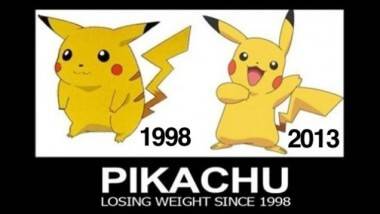 And fat Pikachu is a delight! I wonder to this day why the design was slimmed down. Was it just the character layouts naturally began to go there? Was it a mandate from the higher-ups? These are the questions that haunt a generation.
And fat Pikachu is a delight! I wonder to this day why the design was slimmed down. Was it just the character layouts naturally began to go there? Was it a mandate from the higher-ups? These are the questions that haunt a generation.
Let’s go onto animation then…Well, there’s no doubt its pretty artless. This isn’t to crap on the animators: The slog of TV animation in Japan can be downright scary to say the least. It’s standard pre-digital limited stuff – Lots of stills, recycled footage, and lots of jumping from pose to pose with only a blur in between to register as motion. Once again, my rose-tinted disposition made these shortcuts seem utterly adorable. The video transfer done to comply with broadcast standards across the globe may have jerked the colour about though, because it’s quite muddy looking. Oh well, there’s at least some playful expressions:
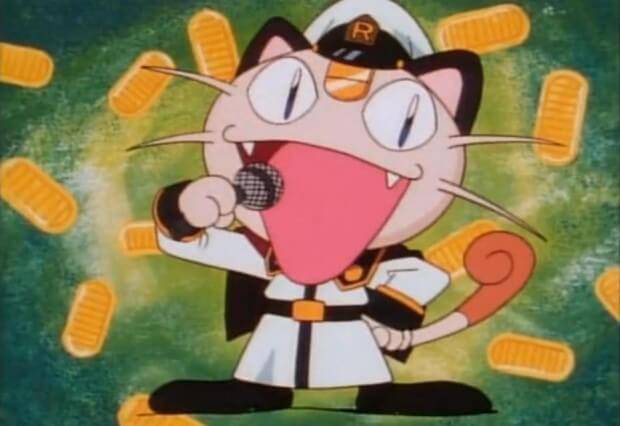 And some stuff just stinks: It’s corny. There are a lot of lame Saturday morning TV-morals – “Teamwork is good! Lying is bad!” etc. And argh, some of the songs. There’s also tons of lip lock that ruins the rhythm of many scenes, and honestly, knowing that this whole hero’s journey of Ash’s eventually leads to nothing is kind of a downer. Ash doesn’t win the league: Arguably this was a brave choice to do the unexpected, and to teach the simple lesson that sometimes things just don’t work out, but we know now it was just a device to get the series back to square one.
And some stuff just stinks: It’s corny. There are a lot of lame Saturday morning TV-morals – “Teamwork is good! Lying is bad!” etc. And argh, some of the songs. There’s also tons of lip lock that ruins the rhythm of many scenes, and honestly, knowing that this whole hero’s journey of Ash’s eventually leads to nothing is kind of a downer. Ash doesn’t win the league: Arguably this was a brave choice to do the unexpected, and to teach the simple lesson that sometimes things just don’t work out, but we know now it was just a device to get the series back to square one.
I should add that the voice work is great. A very small, dexterous team of US actors playing both the main cast and the many, many many one shot characters, as well as some iconic Pokemon – almost anyone in their mid 20s can still do an impression of Squirtle or Bulbasaur. The replacement of this cast with sound-alikes later in the series was a loss indeed. Pikachu’s Japanese voice actor (our yellow friend’s vocal track is the same in all localisations) is also memorable, bringing big range to a limited word set.
The franchise took a bit of a popularity dive in the UK after Indigo league. I imagine the audience was Pokémon-ed out. It had been one hell of a ‘98-‘00 – what with the video game, the card game, the plushies, the movie, and nowadays you were probably more interested in sneaking round your friend’s house to watch a VHS of that new cartoon your parents didn’t want you to watch where the kids swear called South Park (which is now in its 18th season – did I mention that you are getting old?)
So while this Indigo series isn’t exactly a work of art, it’s very agile in clipping through its objectives. If you grew up with it, watching a few episodes should be a great reminiscence. Perhaps it’s not possible to completely detach that cosy feeling and take a real, clinical look at it, but that’s not really what folks want from their childhood shows anyway. What is apparent is that, without this show, anime would likely not be enjoying whatever modicum of inclusion it now has in western TV canon. I’d even go so far as to say that recognized purveyors of good Japanese animation Studio Ghibli wouldn’t have made the inroads they made had this meagrely animated Pokémon show not proven to business types the commercial viability of Japanese content.
 But is the show in its current state worth returning to? In a word – no. Every major series after Indigo is essentially a reset – regions change but the story remains the same; new companions get added while old ones get dropped, but they all essentially fill the same roles of Misty and Brock; and Team Rocket is still Team Rocket – If you thought their schtick was getting samey after 80 episodes, just imagine how it is after 800. All that’s new is a lower level of importance placed on almost everything, and a far lighter, far more banal sense of humour. But let’s be clear, this show doesn’t want you back either – it’s squarely concerned with its kids-only audience.
But is the show in its current state worth returning to? In a word – no. Every major series after Indigo is essentially a reset – regions change but the story remains the same; new companions get added while old ones get dropped, but they all essentially fill the same roles of Misty and Brock; and Team Rocket is still Team Rocket – If you thought their schtick was getting samey after 80 episodes, just imagine how it is after 800. All that’s new is a lower level of importance placed on almost everything, and a far lighter, far more banal sense of humour. But let’s be clear, this show doesn’t want you back either – it’s squarely concerned with its kids-only audience.
Anyway, you don’t need it. Pokémon nowadays has a dual life that few franchises can boast: The kiddy fans of the current product and the older fans of the earlier one, because those who grew up with it are now young adults – many are animators and creators, Pokémon’s influence seeping directly or indirectly into their creative output; many others are writers with degrees in cultural studies, applying all kinds of academic analysis to the franchise, the internet awash with ponderous articles on the product.
So if I may put on my own ponderous hat here (as if I already hadn’t) – I think the most fascinating thing about the never-ending Pokémon show circa 2015 is the purgatory our hero finds himself in. Recall the belief you had in Ash’s first quest for glory. Ash Ketchum back then personified our own grand ambitions, and now – like with so many of his fans back in 1999 – it never came to be. Ash Ketchum is running on a hamster wheel. Again and again, he repeats the same old cycle; ignorant to the failure this behaviour guarantees him. Occasionally, the spectre of the first series looms over him, much like a childhood full of potential that never yielded results. All those goals he’d expected to reach, the spoils of which would simply fall in his lap…all those dreams…like tears…in rain.
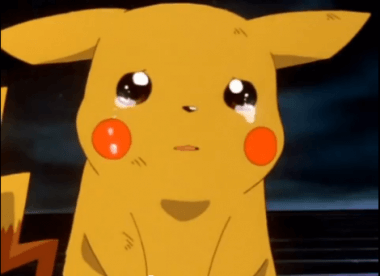 Pokémon X and Y: the Series currently runs on CITV, who knows what adventures Ash and his friends will have between now and the time the show becomes unprofitable.
Pokémon X and Y: the Series currently runs on CITV, who knows what adventures Ash and his friends will have between now and the time the show becomes unprofitable.

